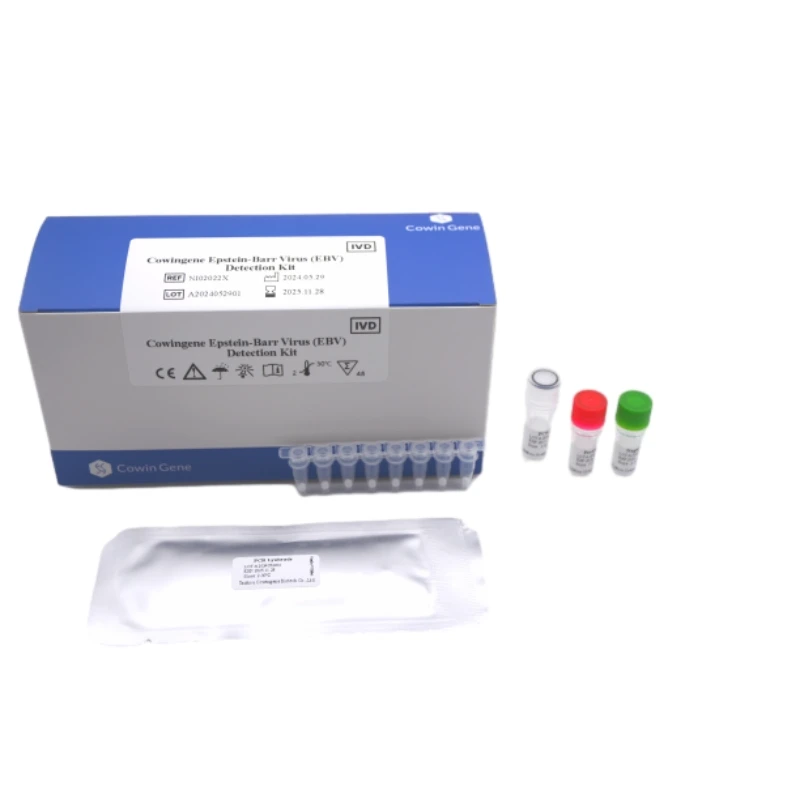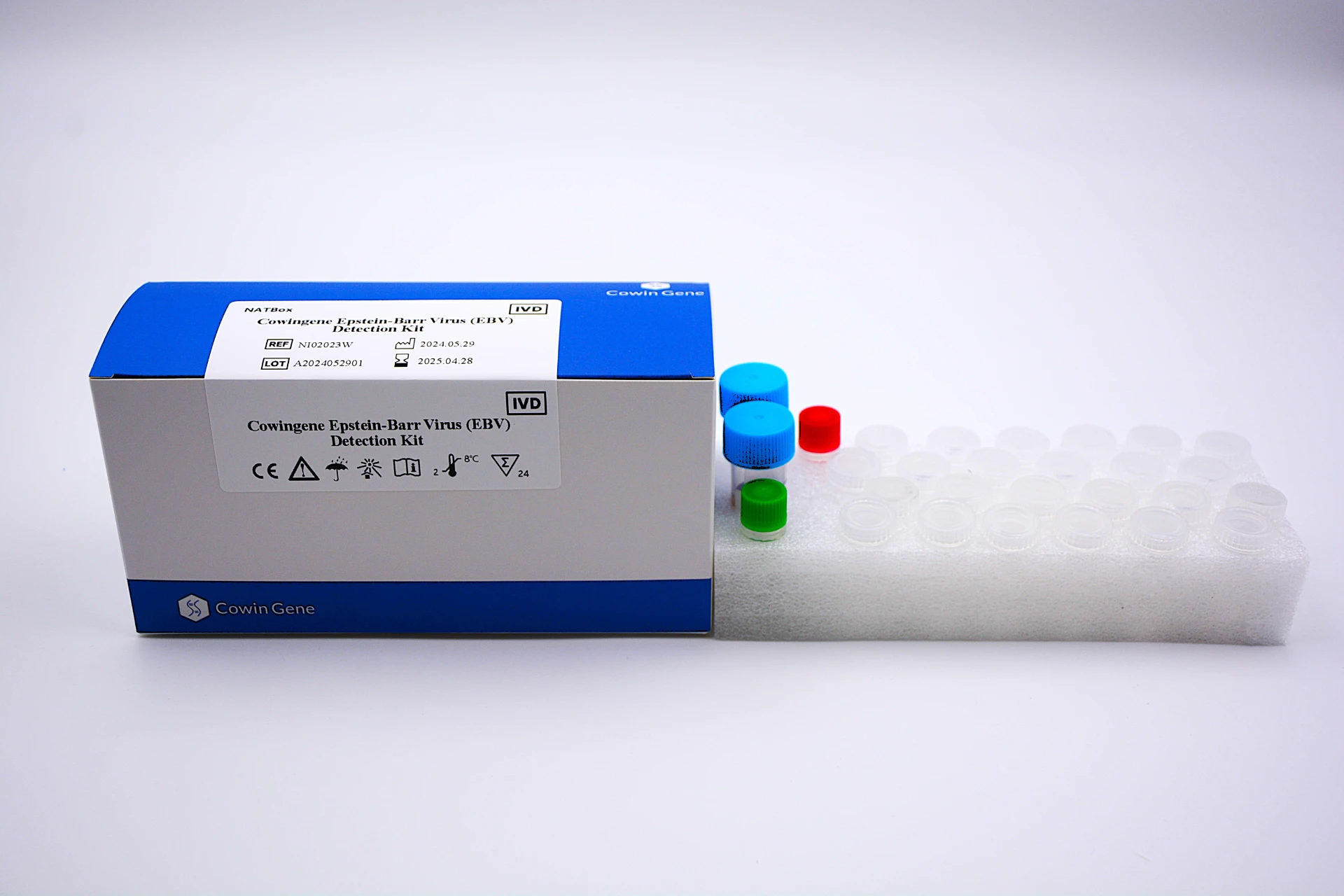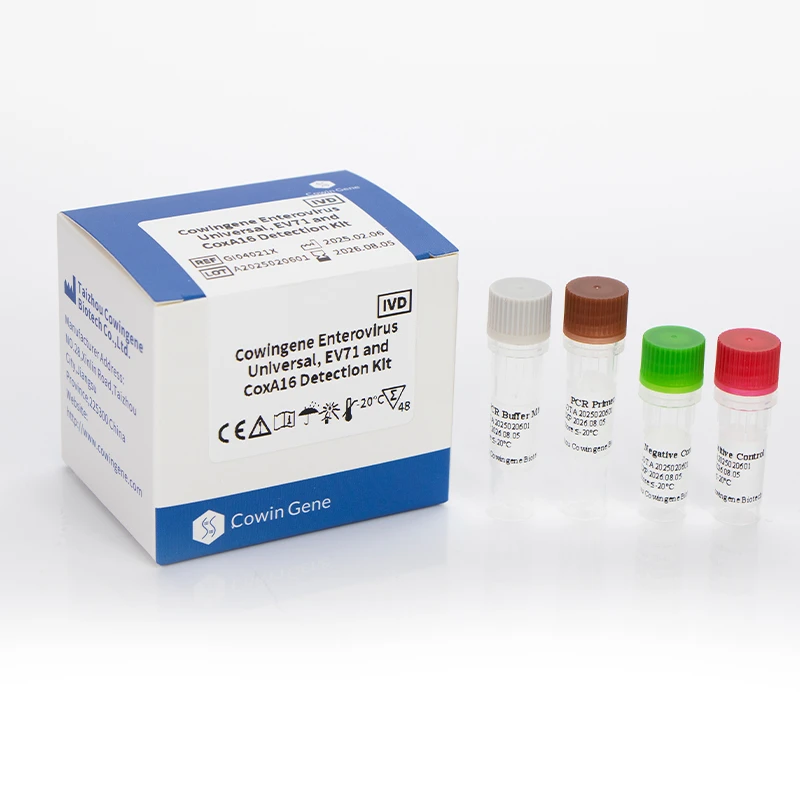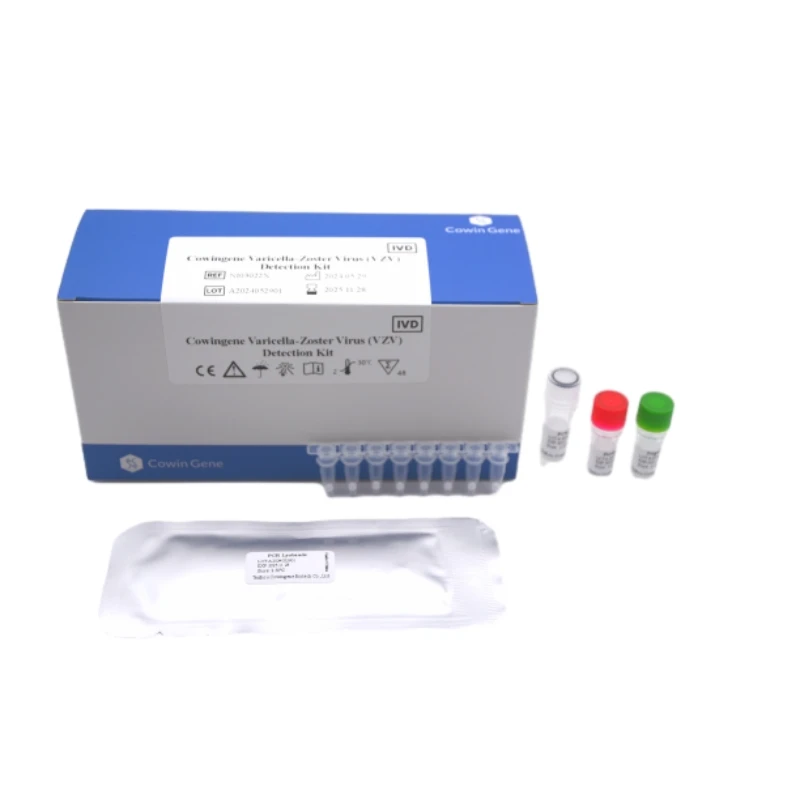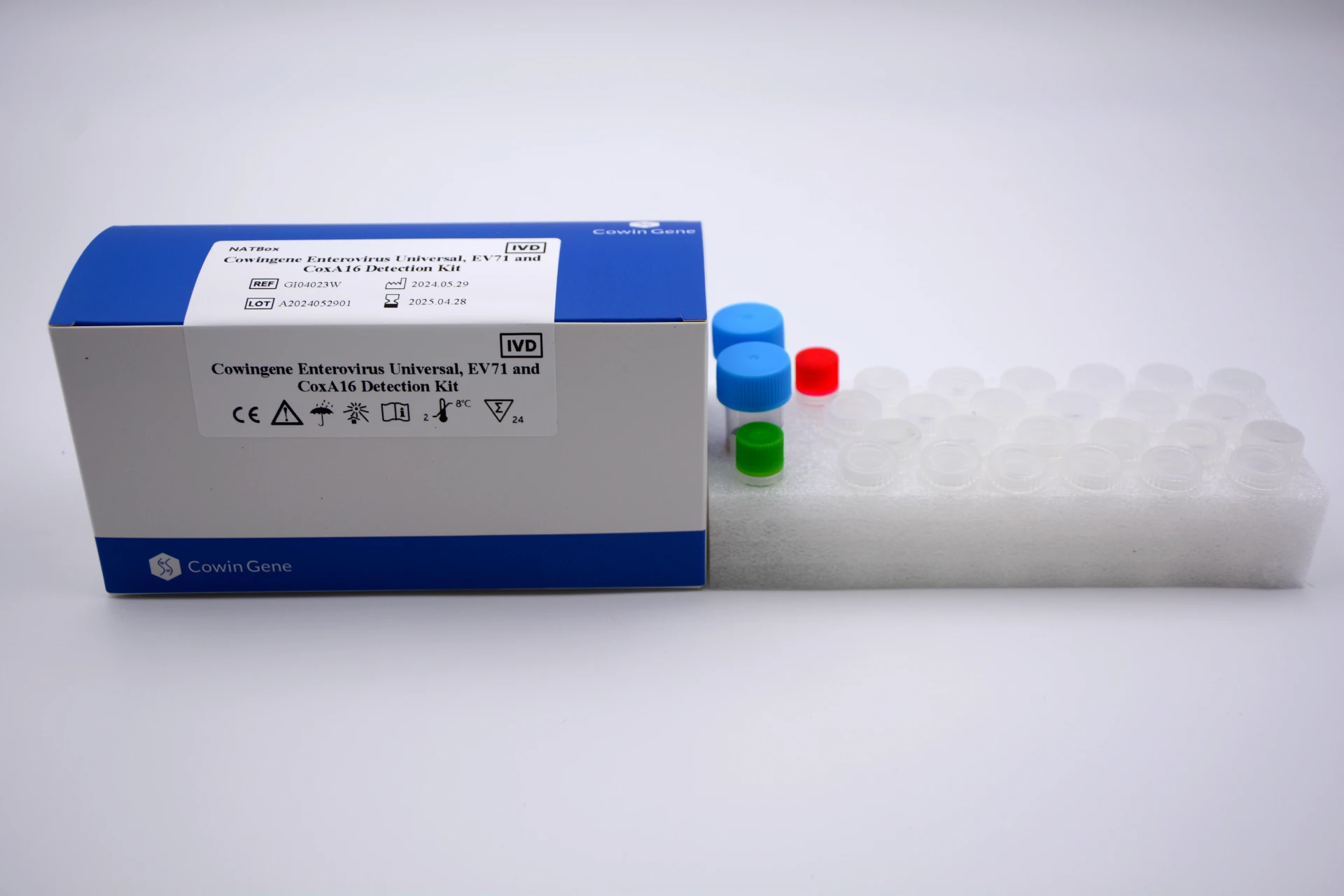Aug . 31, 2025 21:57 Back to list
Gastrointestinal PCR and GI Pathogen Panels: Enhancing Diagnostic Accuracy for Gastrointestinal Infections
Gastrointestinal PCR, a molecular diagnostic technique tailored for detecting pathogens associated with gastrointestinal (GI) infections, has revolutionized the way clinicians identify the causes of GI illnesses. Unlike traditional culture-based methods that often take days to yield results and may miss fastidious or non-culturable pathogens, Gastrointestinal PCR amplifies specific nucleic acid sequences of GI pathogens, enabling rapid and sensitive detection. This technology can target DNA or RNA from bacteria, viruses, and parasites that cause conditions like gastroenteritis, enteritis, or colitis, providing results in as little as a few hours. By focusing on conserved genetic regions of these pathogens, Gastrointestinal PCR minimizes false negatives and false positives, making it a reliable tool for guiding timely clinical interventions—such as targeted antimicrobial therapy or infection control measures—to reduce the spread of GI infections.
GI Pathogen Panel, a comprehensive diagnostic tool built on Gastrointestinal PCR technology, combines the detection of multiple GI pathogens in a single assay, addressing the challenge of identifying co-infections or pathogens with overlapping symptoms
A typical GI Pathogen Panel includes targets for common bacterial pathogens (e.g., Salmonella, Campylobacter, Shigella), viral pathogens (e.g., norovirus, rotavirus), and parasitic pathogens (e.g., Giardia lamblia, Cryptosporidium). This panel eliminates the need for multiple separate tests, streamlining the diagnostic workflow and reducing the time patients wait for answers. For instance, in cases of acute gastroenteritis where symptoms like diarrhea, vomiting, and abdominal pain are non-specific, a GI Pathogen Panel can quickly pinpoint the exact pathogen(s) responsible, avoiding unnecessary broad-spectrum treatments and improving patient outcomes.
GI PCR Panel, another term for the same comprehensive diagnostic tool as GI Pathogen Panel, leverages the high sensitivity of Gastrointestinal PCR to ensure even low levels of pathogens are detected
Unlike conventional methods that require high pathogen loads to produce positive results, GI PCR Panel can identify pathogens in samples with minimal nucleic acid content—such as stool samples from patients in the early stages of infection or those with mild symptoms. This panel also offers flexibility in sample types; while stool samples are the most common, some GI PCR Panels can be used with rectal swabs or other GI tract specimens, expanding their applicability in settings where stool collection is challenging. Additionally, GI PCR Panel results are often accompanied by clear interpretive guidelines, helping clinicians easily link detected pathogens to appropriate treatment strategies.
GI Pathogen PCR Panel, a more explicit term emphasizing the use of PCR technology in the panel, further highlights the technical advantage of this diagnostic tool over traditional methods
By integrating multiplex PCR—where multiple primer sets target different pathogens simultaneously—GI Pathogen PCR Panel maximizes efficiency without compromising accuracy. Each reaction in the panel includes internal controls to monitor nucleic acid extraction efficiency and potential PCR inhibition, ensuring the reliability of negative results. For example, if a sample contains substances that inhibit PCR amplification, the internal control will fail to amplify, alerting clinicians to a potential false negative and prompting a repeat test with a corrected sample. This quality assurance feature makes GI Pathogen PCR Panel a trusted tool in both clinical and public health settings.
GI Panel PCR, a concise variation of the panel name, is widely used in routine clinical practice to address the high burden of GI infections globally
In pediatric populations, where GI infections can lead to severe dehydration and complications, GI Panel PCR enables rapid diagnosis, ensuring prompt rehydration and targeted treatment to prevent long-term health impacts. In outbreak settings—such as those in schools, nursing homes, or cruise ships—GI Panel PCR can quickly identify the causative pathogen (e.g., norovirus) and track its spread, supporting public health measures like isolation of infected individuals and environmental disinfection. Additionally, GI Panel PCR plays a role in antibiotic stewardship by accurately identifying bacterial pathogens, reducing the overuse of antibiotics for viral or parasitic GI infections.

In summary, Gastrointestinal PCR, as the core technology, along with GI Pathogen Panel, GI PCR Panel, GI Pathogen PCR Panel, and GI Panel PCR, forms a robust diagnostic system for GI infections. Gastrointestinal PCR provides the sensitive and rapid detection foundation, while the various panel formats extend this capability to multiple pathogens in a single test, addressing the complexity of GI infection diagnosis. These tools have overcome the limitations of traditional methods, reducing diagnostic time, improving accuracy, and supporting targeted clinical care and public health responses. As global travel and changing environmental conditions continue to impact the spread of GI pathogens, further advancements in these technologies—such as improved point-of-care versions—will be key to enhancing access to timely diagnosis, especially in resource-limited settings, and ultimately reducing the burden of GI infections worldwide.
Gastrointestinal Pcr FAQs
1. What is the primary function of the gastrointestinal PCR test?
The gastrointestinal PCR test is designed for the highly sensitive qualitative detection of specific viral RNA targets, namely Enterovirus Universal, EV71, and CoxA16, directly from patient specimens.
2. How does the gastrointestinal PCR test work?
This gastrointestinal PCR test employs a multiplexed Polymerase Chain Reaction (PCR) assay to simultaneously amplify and detect RNA from Enterovirus Universal, EV71, and CoxA16 in a single reaction tube, providing a comprehensive analysis.
3. What specific pathogens does the gastrointestinal PCR test identify?
The gastrointestinal PCR test specifically identifies and differentiates between three targets: the broad Enterovirus Universal group, Enterovirus 71 (EV71), and Coxsackievirus A16 (CoxA16).
4. What type of specimen is required for the gastrointestinal PCR test?
The gastrointestinal PCR test is validated for use with various patient specimen types, including stool samples and rectal swabs, which are common for gastrointestinal pathogen detection.
5. What is the intended use of the gastrointestinal PCR test?
The gastrointestinal PCR test is an in vitro diagnostic tool intended to aid in the diagnosis of enteroviral infections by detecting the presence of viral RNA in specimens from patients showing signs of gastrointestinal illness.
Related PRODUCTS
-
Norovirus Detection Kit - Rapid, Accurate, CE-Marked
NewsNov.17,2025 -
DNA Extraction Kit | Fast, High-Yield, PCR-Ready Purity
NewsNov.17,2025 -
Human Papilloma Virus HPV PCR: Fast, Sensitive, Accurate
NewsNov.17,2025 -
Arbovirus PCR Test - Rapid, Accurate, Multiplex Detection
NewsNov.17,2025 -
Respiratory Panel Test for Fast, Accurate PCR Diagnosis
NewsNov.17,2025 -
Respiratory Panel Test for Rapid, Accurate PCR Diagnosis
NewsNov.04,2025


